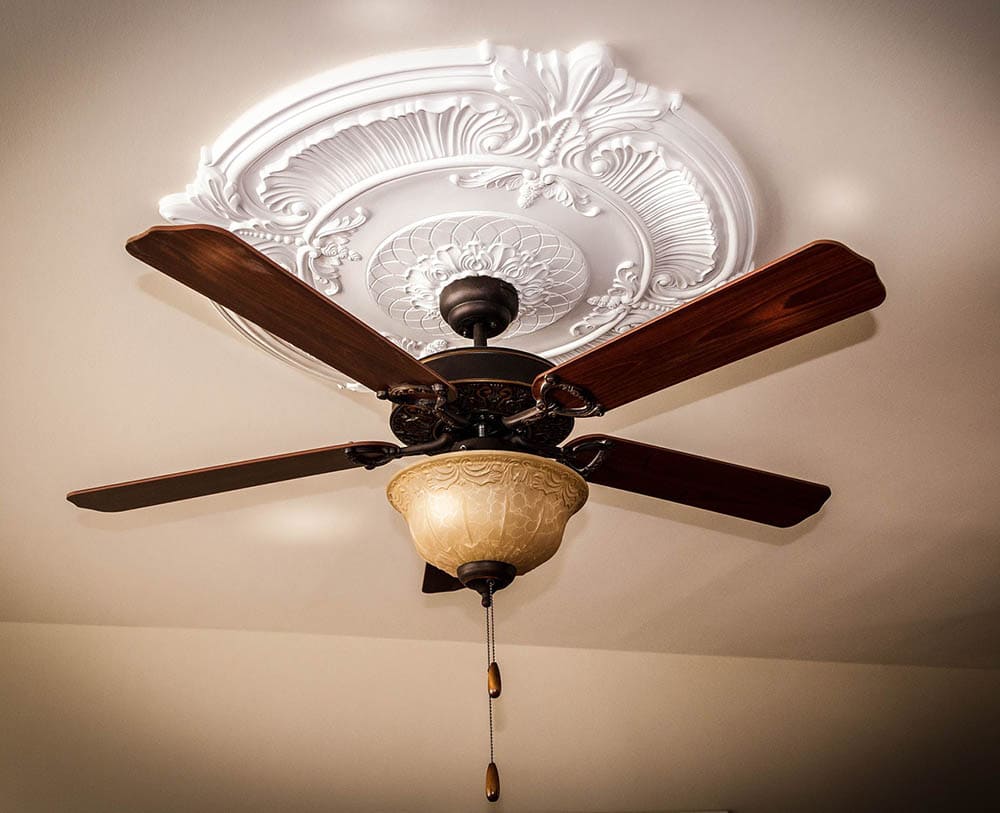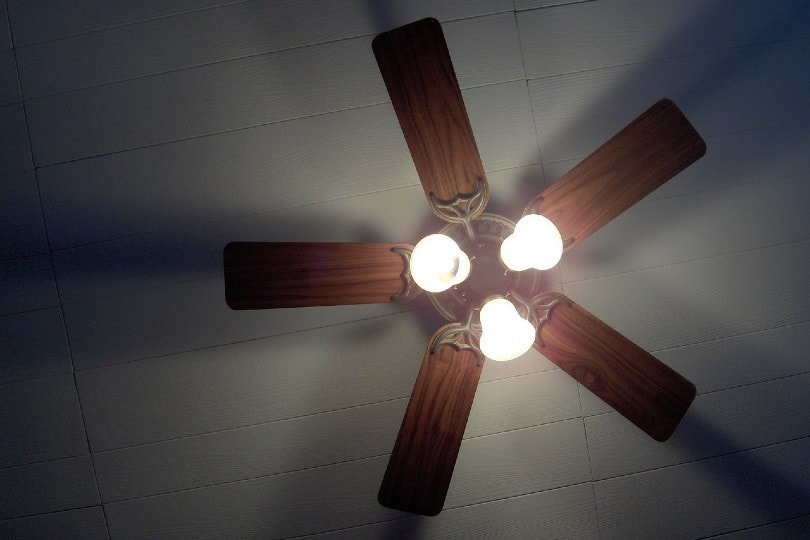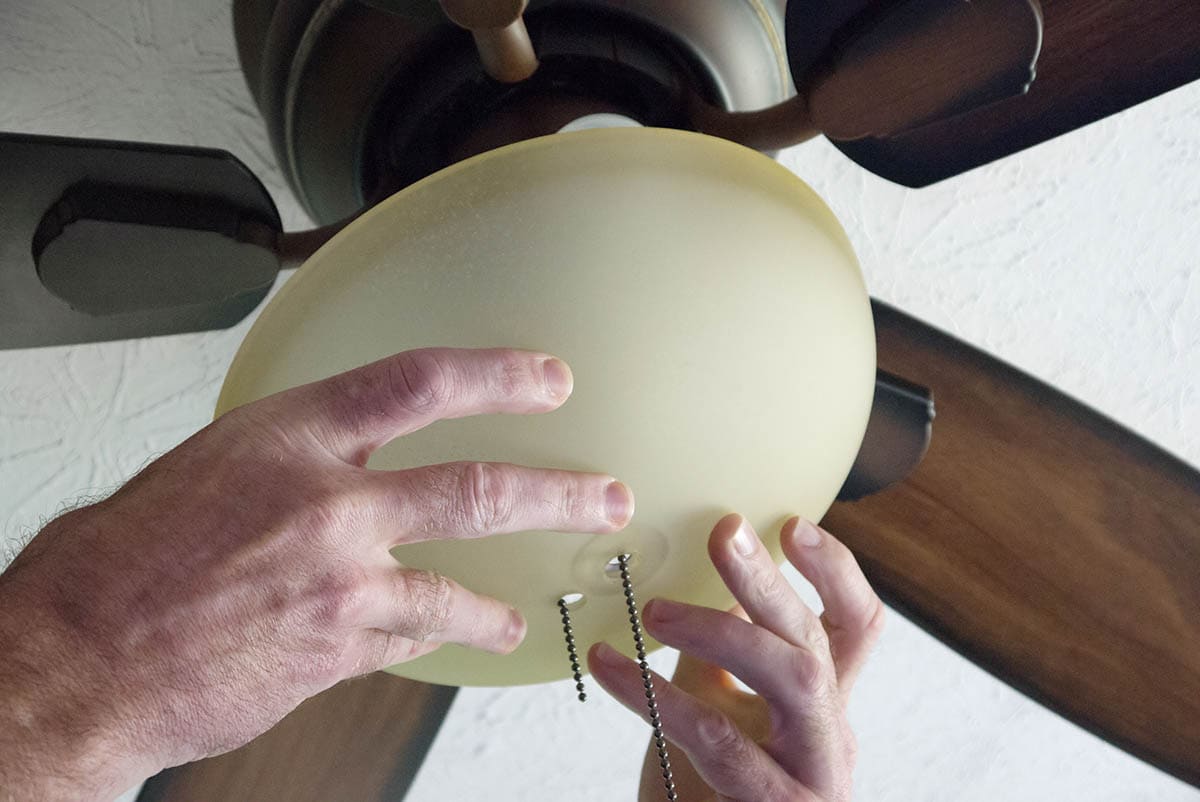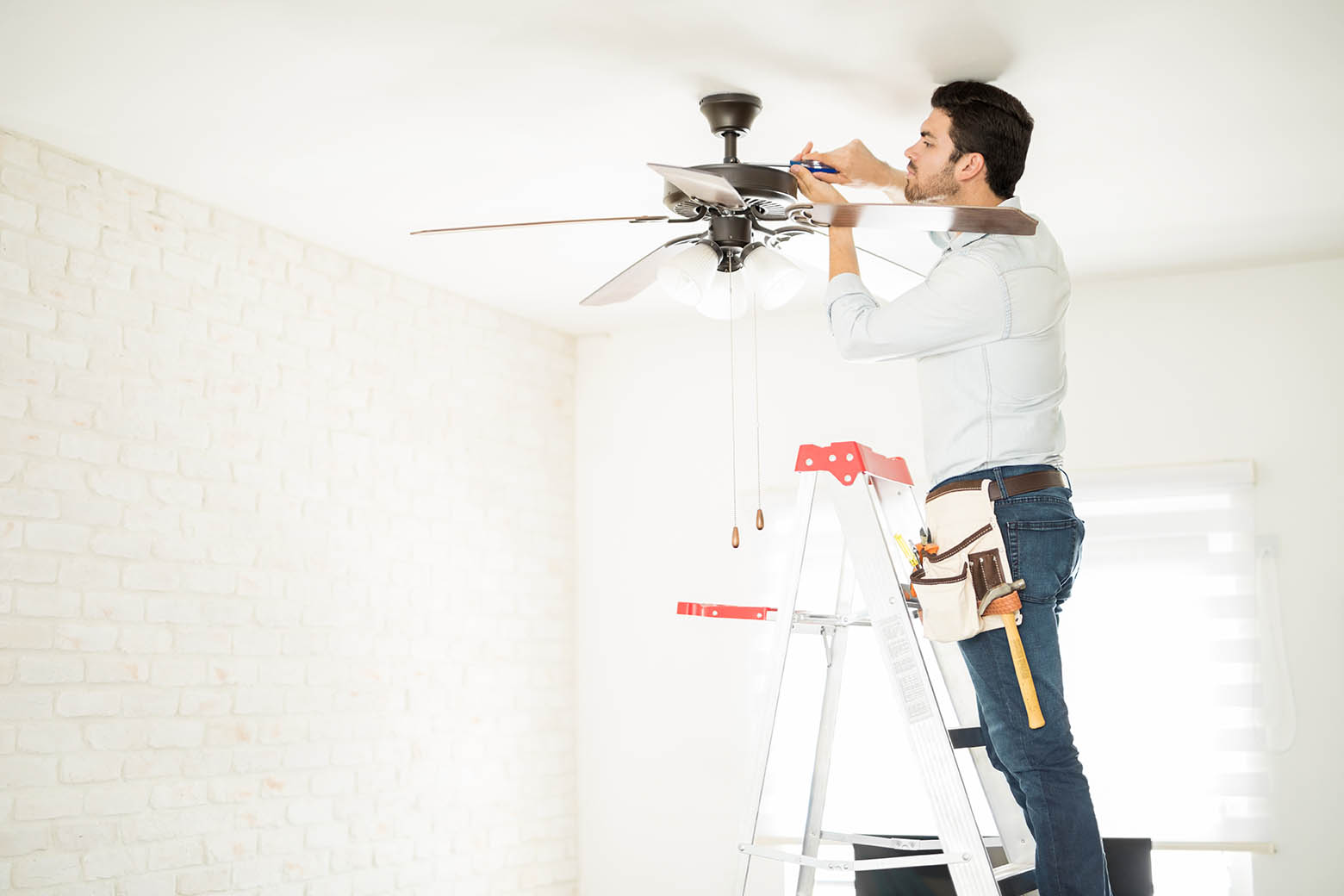How to Fix a Squeaky Ceiling Fan in 4 Steps
-
Pete Ortiz
- Last updated:

A squeaking ceiling fan isn’t the end of the world, but it is enough to drive you crazy. Not only that, but a squeaky fan that is left unfixed can potentially be dangerous, though this is in an extreme scenario. In either case, it’s a good idea to fix a squeaky ceiling fan so you can sleep soundly.
If you need to fix a squeaky ceiling fan, keep reading. This article explains what you need to diagnose and fix a ceiling fan that won’t stop squeaking.
What You’ll Need
- Ladder or some other item to stand on
- Lubricant
- Damp cloth
- Vacuum cleaner
- Feather duster
- Phillips screwdriver
- Yardstick
- Balancing kit
- Machine oil

How to Fix a Squeaky Ceiling Fan
There are a couple of possible causes for a squeaky ceiling fan. It’s important to determine why your ceiling fan is squeaking to fix it properly. For this reason, you might not need to go through all the steps to fix your ceiling fan. For some people, step one is enough to fix the issue, whereas issues require all four steps.
After you finish a step, turn the fan back on and see if that fixes the squeaking issue. If it did, you don’t need to continue the rest of the steps. If the squeaking continues, move on to the next steps until the issue is resolved.
For all the steps, you will need a ladder or some other device to stand on. For extra safety, ask someone to help you out by standing below. This person can help stabilize the item you were standing on or be there in the case of an emergency.
How to Fix a Squeaky Ceiling Fan (4 Steps)
1. Clean the Fan
Ceiling fans are rarely cleaned, allowing dirt, debris, and dust to build up, especially after years of use. Not only is this debris buildup gross, but it can cause the ceiling fan to squeak too. You will want to inspect the ceiling fan to make sure all parts of it are clean.
To properly clean the fan, turn off the power completely. Use a damp cloth to wipe down the blades thoroughly. You will also need to clean out the motor, but we will cover this more shortly. You can use a vacuum to get the job done. A feather duster can remove any other remaining dust.

2. Make Sure Everything Is Tight
Squeaking can sometimes be caused by items coming loose over time. There are screws all over your ceiling fan. If just one of these screws comes loose, you might have an annoying sound to deal with. Begin by turning off the power to the ceiling fan.
Use a screwdriver to tighten every single screw attached to the fan. This includes the light fixture if the fan is attached to one. Also, look at the screws on the fan’s junction box. You might even need to remove the ceiling box connection to make sure everything is tightened. Finally, ensure all the blades are secured to the fan mechanism because the blades can easily become loosened.
3. Fix the Blade Balance
The blade’s balance refers to the space between the top of the blade and the bottom of the ceiling. You want every blade to have the same distance. You can use a yardstick to measure the space in between each blade. Just hold it perpendicularly to measure the space between. If the space is even for each, your blades are not out of balance.
If your blades are out of balance, you will need to purchase a balancing kit if one did not come with your ceiling fan or you have since lost it. Follow the instructions on this balancing kit to make sure it is done correctly, but make sure to turn off the fan before doing any of this.

4. Add Lubrication
Just like many other mechanical parts, ceiling fans need to be oiled. You can see if your fan needs to be oiled by looking for an oil hole that should be over the motor or bearings. Make sure to turn the fan off before doing this.
Use a light machine oil to lubricate the motor. Six drops or so will be enough. Something like a sewing machine oil will be perfect. Move the fan around so that the oil can get into all the gears.
Note that you cannot use WD-40 for this step. Since it is not an oil-based lubricant, it can make the matter worse. So, only use a light machine oil to lubricate the motor.
Why Is My Ceiling Fan Squeaking?
There are many reasons why a ceiling fan can squeak. Some of the most common are dirty fans or fans with loose screws. Over time, fans get dirty, and the screws naturally loosen with the fan’s movement. If you have an especially old fan, blade balance and a motor that needs oiling may be to blame.
To determine exactly why your ceiling fan is squeaking, you will need to evaluate the ceiling fan in question. Get a ladder and a person to help you out. Inspect all parts of the ceiling fan until the actual cause is determined.

Can I Use WD-40 on My Ceiling Fan?
Yes and no. You can use WD-40 on the blades, but you cannot use WD-40 on the motor. If you are anxious about WD-40 getting into the motor, avoid WD-40 entirely. Still, adding WD-40 around the blades will not damage the ceiling fan in any way. Just make sure none gets into the motor.
 Final Thoughts
Final Thoughts
Fixing a ceiling fan that squeaks isn’t particularly difficult, but it can be annoying because there are many reasons why it could be squeaking. You will need to do a process of elimination to determine why your ceiling fan is squeaking and fix the problem.
If you cannot get the squeaking to go away, it can be an issue with the fan itself, such as poor craftsmanship. If that’s the case, you might want to contact a professional or buy a new fan outright. Hopefully, the tips above will work, and you won’t have to do that, though.
Related Reads:
- How to Replace a Ceiling Fan in 9 Steps (with Pictures)
- Ceiling Fan Installation Costs
- How To Fix a Noisy Ceiling Fan in 7 Steps (with Pictures)
Featured Image Credit: JamesDeMers, Pixabay
Contents


